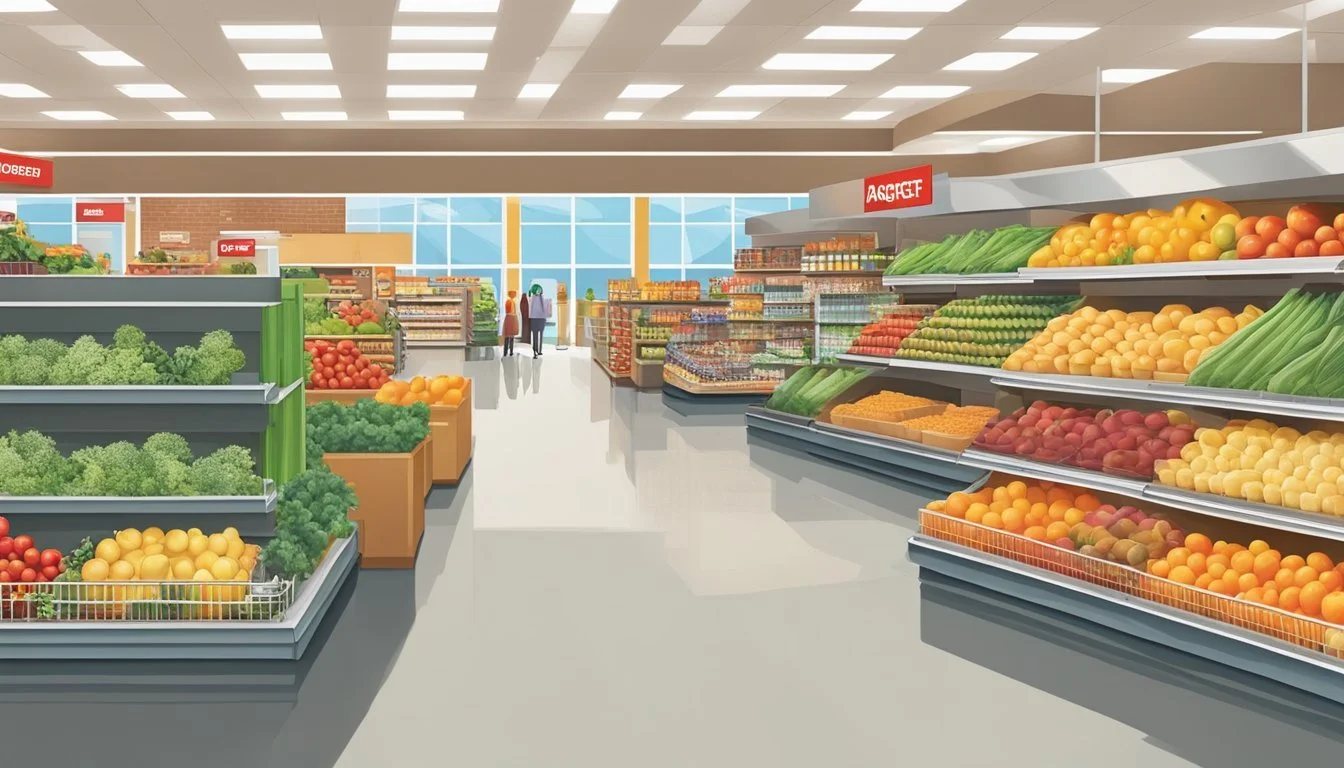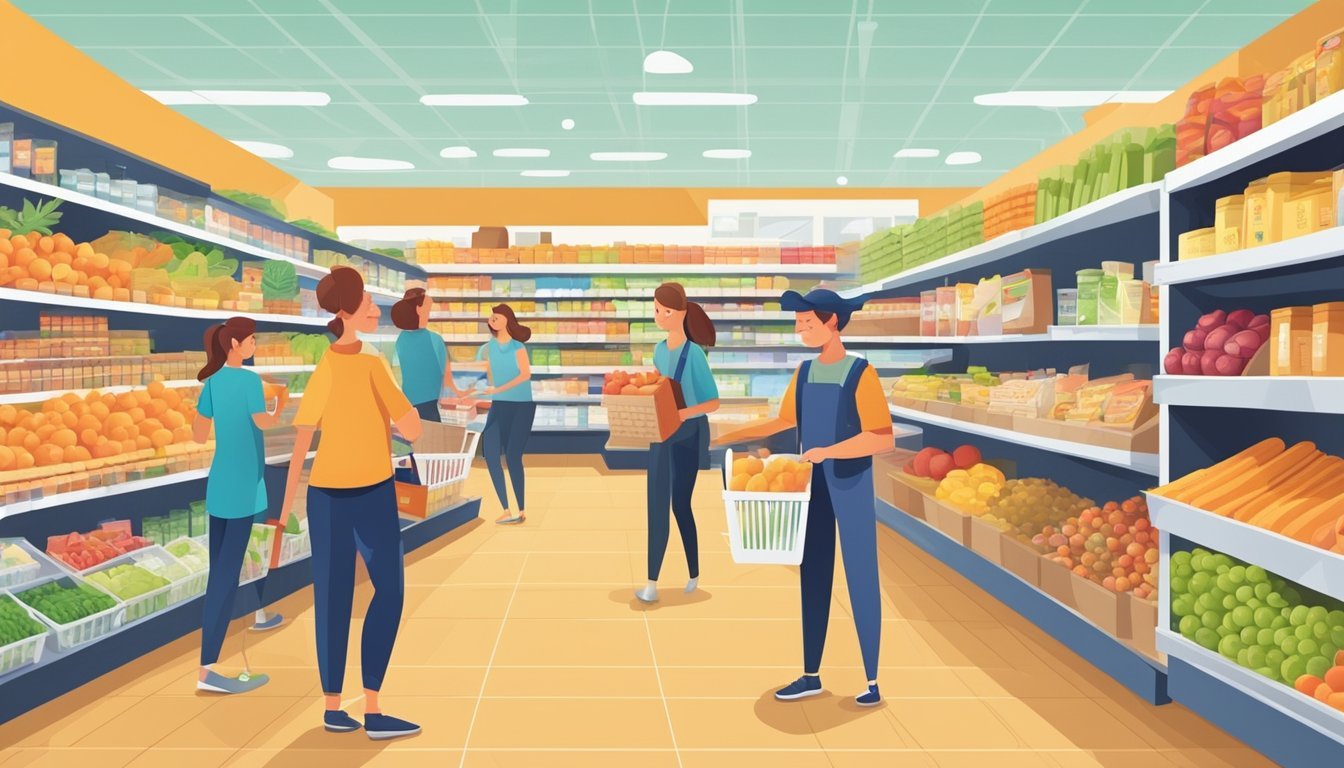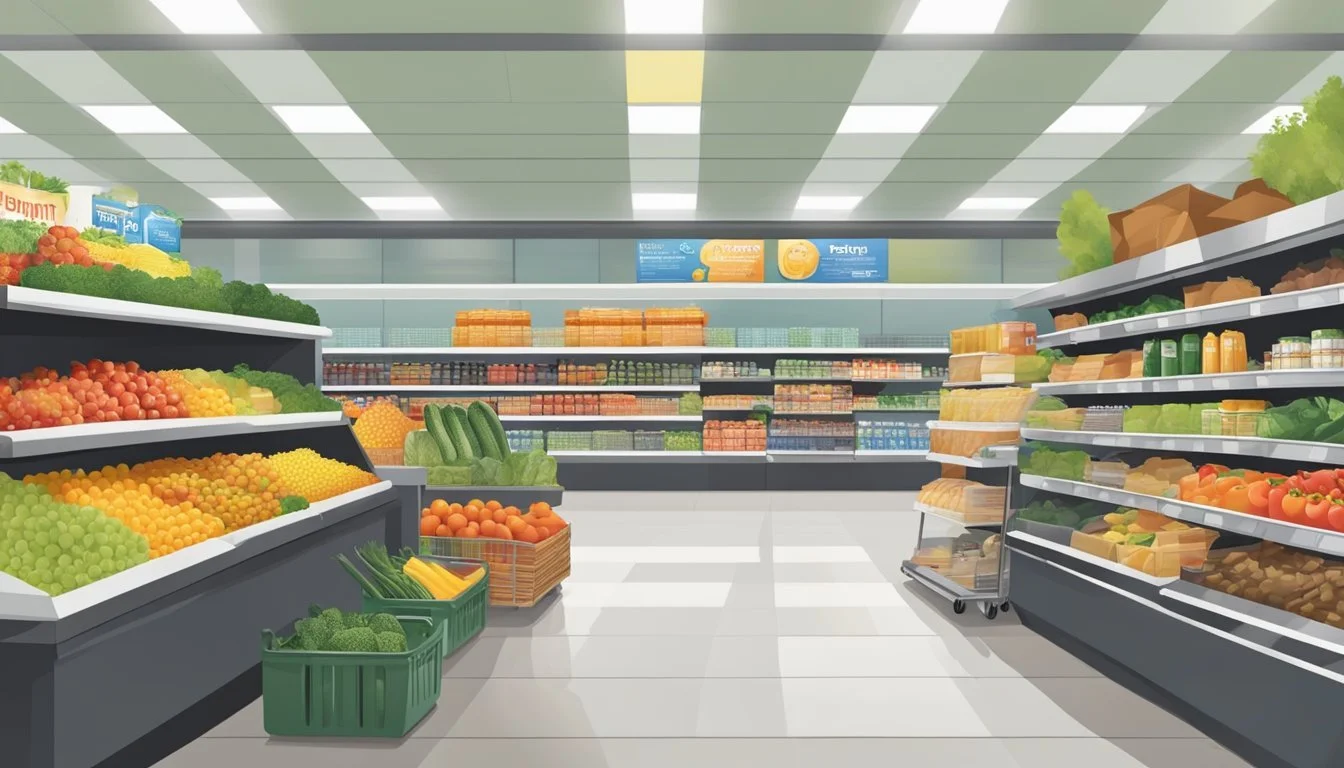Target vs Lucky
Comparing Prices, Selection, and Shopping Experience
When it comes to grocery shopping, choosing the right store can make a significant difference in both your budget and overall experience. Target and Lucky are two popular options that offer distinct advantages for shoppers.
Target generally provides a more modern and streamlined shopping experience, while Lucky often focuses on competitive pricing for traditional grocery items. Target's grocery sections tend to be well-organized and integrated with their broader merchandise offerings, making it convenient for one-stop shopping. Lucky, on the other hand, typically offers a more conventional supermarket layout with a wider variety of food products.
Price-conscious shoppers may find Lucky more appealing, as it frequently runs sales and promotions on everyday essentials. Target's grocery prices can be slightly higher, but the store compensates with its stylish house brands and unique product selections. The choice between Target and Lucky ultimately depends on individual preferences for pricing, product range, and shopping atmosphere.
History and Growth of the Brands
Target and Lucky have distinct histories that shaped their development in the grocery and retail sectors. Both brands experienced significant changes over the decades, adapting to market trends and consumer preferences.
Target's Evolution
Target's roots trace back to 1902 when George Dayton founded Goodfellow Dry Goods in Minneapolis. The company rebranded as Dayton's Dry Goods Company in 1903, later simplified to Dayton Corporation.
In 1962, the first Target store opened in Roseville, Minnesota, marking the beginning of the discount store chain. Target quickly expanded, becoming a major player in the retail industry.
By the 1990s, Target had established itself as a nationwide brand. The company focused on offering trendy, affordable products, setting itself apart from competitors.
In recent years, Target has invested heavily in its grocery offerings. The introduction of in-store brands like Market Pantry and Good & Gather expanded Target's presence in the food retail sector.
Lucky's Brand Journey
Lucky Stores began in 1935 in San Leandro, California. The supermarket chain grew steadily, becoming a familiar name in the western United States.
Throughout the mid-20th century, Lucky expanded its operations, opening stores across California and other states. The brand became known for its competitive prices and wide selection of groceries.
In 1998, American Stores, Lucky's parent company, was acquired by Albertsons. This led to the disappearance of the Lucky brand by 1999.
However, the Lucky name made a comeback. In 2006, Albertsons sold some of its assets, including the rights to the Lucky brand in Northern California, to Save Mart Supermarkets. This allowed Lucky stores to reopen in select locations.
Store Locations and Accessibility
Target and Lucky offer different levels of accessibility and coverage across the United States. Their store locations impact customer convenience and shopping options.
Target Store Reach
Target boasts an extensive network of stores across the country. The retail giant operates over 1,800 locations in all 50 states. Most Target stores feature grocery sections, providing a one-stop shopping experience for customers. Urban areas often have smaller-format Target stores to fit into tighter spaces.
Target's widespread presence makes it accessible to a large portion of the U.S. population. Many locations offer drive-up and pickup services, enhancing convenience for shoppers. The company continues to expand its reach, opening new stores in underserved areas.
Lucky's Market Presence
Lucky's market presence is more limited compared to Target. The supermarket chain primarily operates in Northern California and Utah. Lucky stores are typically full-service grocery outlets, focusing on food and household essentials.
Lucky's regional focus means it serves a smaller customer base than Target. However, this concentration allows Lucky to tailor its offerings to local preferences. The chain maintains a loyal following in its operating areas.
Lucky's parent companies, Save Mart Supermarkets and Albertsons, influence its store locations and expansion strategies. This regional approach contrasts with Target's national footprint.
Product Range and Quality
Target and Lucky offer diverse product selections with varying quality standards. Both stores stock national brands alongside their own private labels, catering to different customer preferences and budgets.
Brands and Labels
Target features a wide array of national brands and its own private labels like Good & Gather and Market Pantry. These store brands often provide comparable quality at lower prices. Lucky Supermarkets also carries popular national brands but puts emphasis on their SE Grocers line, which typically costs 20% less than national equivalents while maintaining similar taste and quality.
Target's exclusive brands cover various categories, from groceries to household items. Lucky focuses more on everyday grocery staples with their private label offerings.
Overall Quality and Freshness
Target has invested in improving its fresh produce and perishables sections in recent years. The company has implemented stricter quality control measures for its fresh items. Lucky Supermarkets, being a traditional grocer, has a long-standing reputation for maintaining fresh produce and meat departments.
Both stores strive to provide high-quality products, but Lucky may have an edge in the freshness of perishables due to its focus on grocery items. Target's produce quality can vary by location and store size.
Organic Offerings
Target has expanded its organic selection significantly, particularly through its Good & Gather Organic line. The store offers organic options across various categories, including produce, dairy, and packaged goods. Lucky Supermarkets also stocks organic products, though their selection may be more limited compared to Target.
Target tends to have a broader range of organic brands, including both national and private label options. Lucky's organic offerings are often focused on essential items and produce. Both stores aim to make organic products more accessible by offering competitive pricing on these items.
Pricing Strategies
Target and Lucky Supermarkets employ different approaches to attract customers through pricing. Both stores use a mix of everyday low prices and special promotions to appeal to budget-conscious shoppers.
Comparison of Everyday Prices
Target generally offers competitive prices on many grocery items. Their store brand, Good & Gather, provides quality products at lower price points than national brands. Lucky Supermarkets focuses on local pricing strategies, often matching or beating competitors in their immediate area.
Target's larger scale allows for more aggressive pricing on some items. For example, their French bread is typically priced lower than Lucky's equivalent. However, Lucky may have better prices on produce due to regional sourcing.
Both stores use cost-plus pricing for many items. This involves setting retail prices at a fixed percentage above wholesale costs.
Deals and Discounts
Target runs weekly sales and offers additional savings through their Target Circle loyalty program. Members can access personalized deals and earn 1% cash back on purchases.
Lucky Supermarkets provides digital coupons through their rewards program. They also feature weekly specials and in-store promotions.
Both chains use loss leader pricing on select items to drive foot traffic. This involves selling certain products below cost to attract customers who will likely purchase other, more profitable items during their visit.
Target's larger size allows for more frequent and diverse promotions. Lucky focuses on competitive local deals to maintain customer loyalty in their markets.
Shopping Experience and Services
Target and Lucky offer distinct shopping environments and amenities. Both stores prioritize customer convenience but implement different strategies to enhance the grocery shopping experience.
In-Store Navigation
Target's layout features wide aisles and clear signage, making it easy to locate items. The store's design incorporates a mix of grocery and general merchandise sections, allowing for one-stop shopping. Lucky focuses solely on groceries, with a more traditional supermarket layout. Their aisles are organized by food categories, with produce typically near the entrance. Target uses bold red accents throughout, while Lucky opts for a more subdued color scheme.
Lucky often places popular items at eye-level, while Target may showcase their private label products prominently. Both stores utilize end-cap displays for promotions and seasonal items.
Checkout Efficiency
Target implements a mix of traditional cashier lanes and self-checkout options. Their self-checkout area is typically spacious, with multiple kiosks available. Target's mobile app allows for contactless payment, speeding up transactions.
Lucky generally relies more on staffed checkout lanes. They may have fewer self-checkout options compared to Target. During peak hours, Lucky often opens additional lanes to manage customer flow.
Both stores train cashiers to be efficient and courteous. Target's RedCard offers a 5% discount, potentially incentivizing faster checkout for cardholders.
Additional Services
Target provides a broader range of services beyond groceries. Their stores often include pharmacies, optical centers, and Starbucks cafes. Target's grocery delivery service is integrated with Shipt, offering same-day delivery in many areas.
Lucky focuses primarily on grocery-related services. They typically offer a deli counter with prepared foods and a bakery section. Lucky's grocery delivery options may vary by location, often partnering with third-party services like Instacart.
Both stores have customer service desks for returns and inquiries. Target's guest services area is usually more extensive, handling a wider range of transactions and services.
Customer Perception and Loyalty
Target and Lucky have distinct reputations that shape how consumers view and interact with each brand. Their ratings and loyal customer bases reflect differing approaches to meeting shopper needs.
Brand Reputation
Target has cultivated a reputation as a trendy yet affordable retailer. Its grocery offerings complement a wide selection of home goods, apparel, and electronics. Customers associate Target with stylish private-label products and an enjoyable shopping atmosphere. The "Expect More, Pay Less" slogan resonates with budget-conscious families seeking quality.
Lucky, a regional chain, is known for its no-frills approach and focus on low prices. Its reputation centers on providing basic groceries and household essentials at competitive rates. Lucky appeals to price-sensitive shoppers looking to stretch their food budgets without compromising on necessities.
Consumer Ratings and Reviews
Target consistently receives positive ratings for its clean stores, friendly staff, and diverse product selection. Reviews often praise the convenience of one-stop shopping for groceries and other items. Customers appreciate Target's easy-to-navigate layout and frequent promotions.
Lucky garners mixed reviews, with price being the primary factor in positive feedback. Shoppers commend Lucky for its affordable prices on staple items. However, some reviews cite concerns about produce quality and limited organic options. Lucky's loyal customers value its straightforward approach to grocery shopping without extra frills.
Community and Environmental Impact
Target and Lucky both impact their local communities and the environment through various initiatives and practices. Their approaches differ in some key areas.
Local Community Engagement
Target focuses on community grants and volunteer programs. The company provides millions in grants annually to local nonprofits and schools. Target employees volunteer thousands of hours in their communities each year.
Lucky emphasizes supporting local food banks and hunger relief efforts. The grocery chain donates food and funds to regional food banks. Lucky also partners with local farmers and producers to source products.
Both stores offer job opportunities and economic benefits in the areas they serve. Target tends to have larger stores that employ more people. Lucky's smaller format allows it to operate in some neighborhoods that can't support big box retailers.
Sustainability Practices
Target has set ambitious sustainability goals, aiming to reduce emissions and waste. The company is increasing use of renewable energy in stores. Target also encourages recycling and offers eco-friendly product lines.
Lucky focuses on reducing food waste through careful inventory management. The chain donates edible unsold food to local charities. Lucky has also expanded its selection of organic produce in recent years.
Both retailers are working to reduce plastic bag use. Target offers reusable bag options and incentives. Lucky has eliminated single-use plastic bags in some locations, providing paper or reusable alternatives.
Target's size allows for larger-scale sustainability initiatives. Lucky's smaller footprint can mean lower overall environmental impact per store.
Comparative Analysis
Target and Lucky Supermarkets occupy distinct niches in the grocery retail landscape. Their market positioning, product offerings, and consumer appeal differ significantly, shaping shoppers' choices.
Market Analysis
Target operates as a big-box retailer with a diverse product range extending beyond groceries. The company has over 1,800 stores across the United States, including smaller format locations in urban areas. Target's grocery sections typically occupy a portion of their larger stores, offering a mix of essentials and specialty items.
Lucky Supermarkets, in contrast, focuses primarily on Northern California and Utah. As a regional chain, Lucky provides a more localized shopping experience. Their stores are dedicated grocery outlets, emphasizing fresh produce, meats, and a wide selection of food items.
Target's broader reach and product diversity appeal to shoppers seeking one-stop convenience. Lucky's regional focus allows for tailored inventory and community engagement.
Consumer Preferences
Target attracts consumers who value style and affordability across various product categories. Their grocery selection often includes trendy and exclusive brands alongside staples. The "Expect More, Pay Less" slogan resonates with budget-conscious shoppers seeking quality.
Lucky Supermarkets cater to customers prioritizing a traditional grocery experience. Their focus on fresh foods and competitive pricing appeals to value-seekers and those who prefer a dedicated supermarket environment.
Target's integrated shopping experience suits time-pressed consumers. Lucky's specialized grocery format attracts those who enjoy a more immersive food shopping trip.
Consumer choice often hinges on factors like:
Proximity to home
Product variety
Price points
Store layout and ambiance
Both retailers strive to meet evolving consumer demands through loyalty programs and digital integration.
Final Recommendations
When choosing between Target and Lucky for grocery shopping, consider your priorities and shopping habits.
Target excels in convenience and variety. It offers a wide selection of groceries alongside household goods, making it ideal for one-stop shopping. Target's store brand products are often high-quality and competitively priced.
Lucky focuses more on traditional grocery offerings. It typically has a larger produce section and more options for fresh meats and baked goods. Lucky may appeal to shoppers who prefer a dedicated supermarket experience.
For budget-conscious customers:
Target's REDcard provides a 5% discount on purchases
Lucky offers weekly deals and a rewards program
Product quality comparison:
Category Target Lucky Produce Good Better Meats Good Better Packaged Better Good
Consider alternating between stores to maximize savings. Use Target for household items and packaged goods, while visiting Lucky for fresh produce and meats.
Ultimately, the best choice depends on individual needs, location convenience, and personal preferences in the shopping experience.









